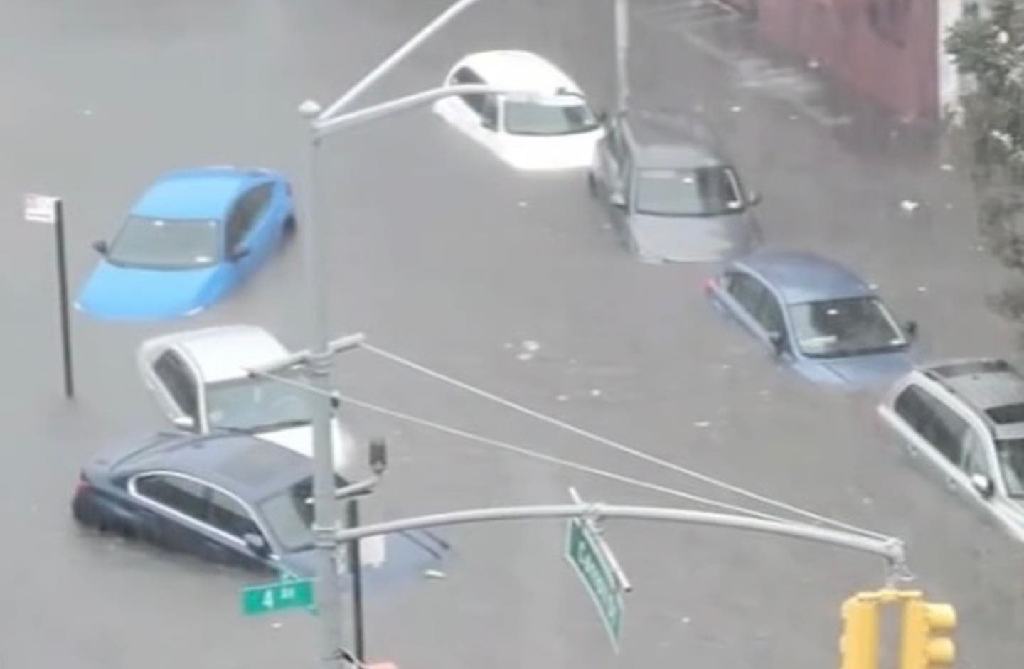Intense torrential downpours struck New York City, unleashing chaos with flash flooding that disrupted essential services and inundated various parts of the city on Friday.

As almost eight inches of rain poured down in certain areas, the consequences were far-reaching, prompting Governor Kathy Hochul to declare a state of emergency for New York City, Long Island, and the Hudson Valley. The severity of the situation led to the deployment of National Guard troops to aid in the response efforts.
In Mamaroneck, a suburb north of the city, emergency officials had to employ inflatable rafts to rescue people trapped in buildings due to flooding. The impact on transportation was significant, with the Metropolitan Transportation Authority reporting major disruptions to both the subway system and the Metro North commuter rail service.
Some subway lines were entirely suspended, and numerous stations closed, while bus routes experienced severe delays, leaving riders stranded for extended periods. Authorities strongly advised New Yorkers to avoid travel unless absolutely necessary.
This extreme weather event is part of a concerning trend, with systems producing heavy rainfall becoming more common in various parts of the U.S., including the New York City area. Climate scientists attribute these patterns to global warming, which has led to more frequent and intense weather phenomena worldwide.
The timing of this downpour marked one of the wettest Septembers on record for New York, with 13.74 inches of rain reported by mid-Friday, and more precipitation expected. According to National Weather Service forecaster Dominic Ramunni, there was a possibility of nearing the 1882 record of 16.82 inches for September.
Even with warnings of “life-threatening” floods, the city’s public schools remained open, leading to some buildings experiencing flooding. However, operations were reportedly unaffected. In contrast, at least one suburban district, Bronxville, just north of New York, dismissed students early due to worsening flooding conditions.
Shocking Twist in Suzanne Morphew’s Tragic Disappearance – New Revelations Unveiled!
The stories of residents underscore the real-life impact of the flooding. Patti Zhang, a social worker from New Hyde Park, described walking her children to school through 5 inches of water, emphasizing the challenging conditions residents faced. Vehicles were marooned on flooded streets, and subway stations transformed into waterlogged impediments for millions of commuters.
The response from Mayor Eric Adams drew scrutiny, especially as residents in low-lying areas like The Hole expressed frustration. Some criticized a lack of warning, drawing parallels to previous incidents, such as the arrival of toxic smoke from Canadian wildfires in June.
Neighboring Hoboken, New Jersey, declared a state of emergency with newly installed floodgates blocking routes. This latest deluge followed a weekend of heavy rain and strong winds from the remnants of Tropical Storm Ophelia, further saturating the ground and setting the stage for the flash flooding witnessed on Friday.
Google’s 25th Birthday: You Won’t Believe What They Started With!
